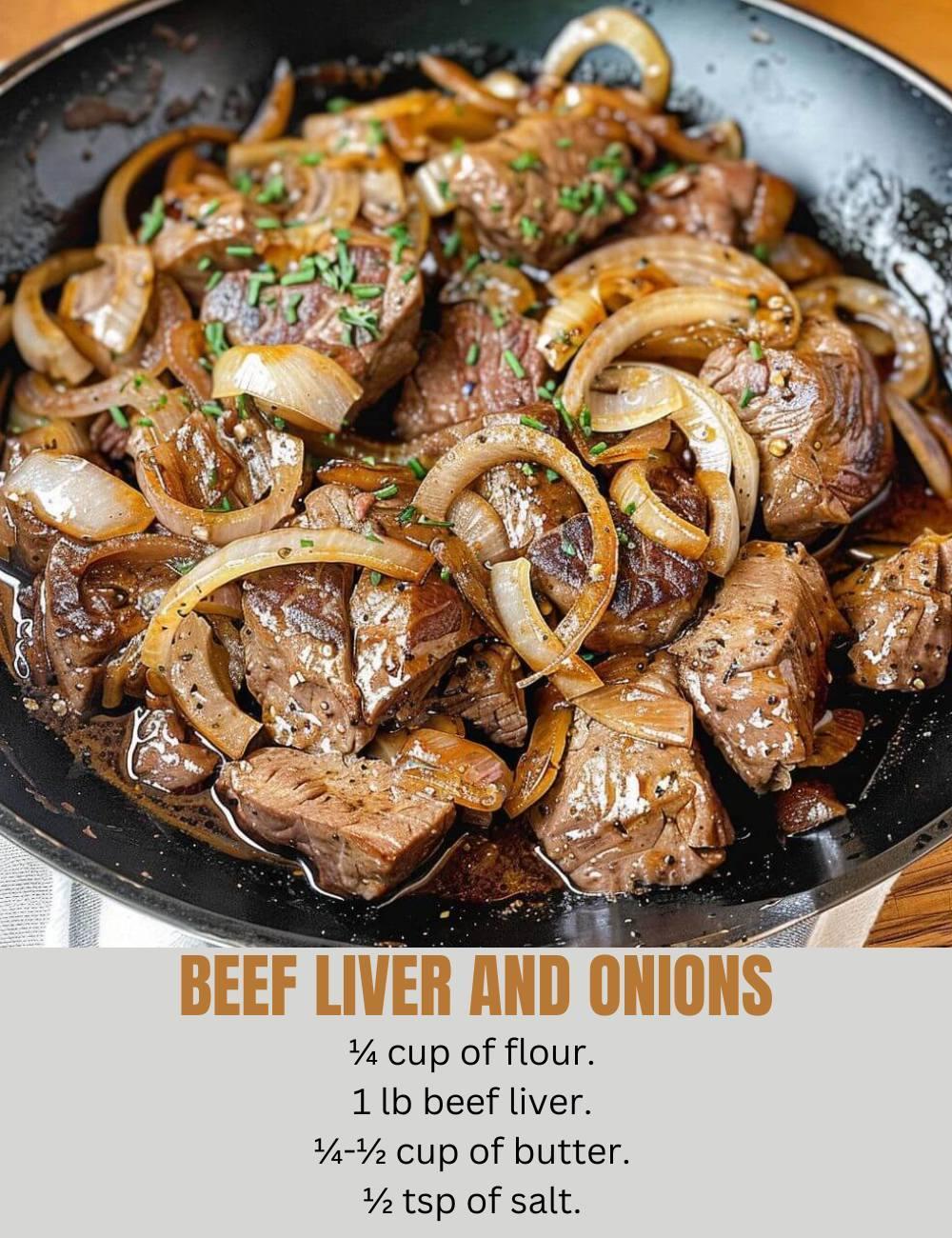News
BEEF LIVER AND ONIONS

Key Ingredients:
Beef Liver: Thinly sliced beef liver is ideal for this recipe. Liver has a unique flavor, and soaking it in milk helps mellow the intensity and make it more tender. Calf’s liver is a milder option if you’re looking for a gentler taste.
Onions: Large onions caramelize to a golden-brown sweetness that pairs perfectly with the liver. Yellow onions are a great choice, but white or sweet onions will also work well.
Milk: Soaking liver in milk helps reduce any bitterness, creating a smoother flavor. Buttermilk can also be used for even more tenderizing power.Butter and Olive Oil: Butter provides rich flavor for caramelizing the onions, while olive oil has a higher smoke point for frying the liver. Together, they’re the perfect combination for this recipe.
All-Purpose Flour: A light coating of seasoned flour helps create a crispy crust on the liver. You can substitute with almond flour or a gluten-free flour blend if you prefer a gluten-free option.
Salt and Black Pepper: Simple seasonings that enhance the flavor of both the liver and onions.
Fresh Parsley: Adding chopped parsley as a garnish adds freshness and a pop of color to the dish. This is optional, but it brings a lovely contrast to the richness of the liver and onions.Instructions:
Step 1: Prepare the Liver
Soak the Liver:
Place the liver slices in a shallow bowl and cover them with milk.
Allow the liver to soak for 30 minutes to 1 hour in the refrigerator. This step helps reduce any bitterness and tenderizes the liver.
Step 2: Caramelize the Onions
Heat the Skillet:
In a large skillet, melt 2 tablespoons of butter over medium heat.
Cook the Onions:
Add the sliced onions to the skillet and cook, stirring occasionally, until they are soft and caramelized, about 15-20 minutes.
Once caramelized, remove the onions from the skillet and set them aside.
Step 3: Prepare the Coating
Season the Flour:
In a shallow dish, combine ½ cup of all-purpose flour, ½ teaspoon of salt, and ¼ teaspoon of black pepper.
Mix well to ensure the seasoning is evenly distributed.
Step 4: Coat the Liver
Dry the Liver:
Remove the liver from the milk and pat it dry with paper towels.
Dredge in Flour:
Coat each liver slice in the seasoned flour mixture, ensuring both sides are well-coated.
Step 5: Cook the Liver
Heat Oil in Skillet:
In the same skillet, heat 2 tablespoons of olive oil over medium-high heat.
Cook the Liver:
Place the coated liver slices in the hot skillet, cooking for about 2-3 minutes per side until they are browned and cooked to your desired level of doneness.
Avoid overcrowding the pan; cook in batches if necessary.
Step 6: Combine and Serve
Add Onions to the Liver:
Return the caramelized onions to the skillet, spooning them over the liver slices.
Allow everything to heat through for another minute.
Garnish and Serve:
Transfer the liver and onions to a serving platter. Optionally, garnish with chopped parsley for added freshness and color.
Serving Suggestions:
This beef liver and onions dish pairs beautifully with classic sides that can absorb the delicious juices. Here are some great options:
Mashed Potatoes: Creamy mashed potatoes provide a smooth, comforting contrast to the rich liver.
Steamed Rice: The mild flavor of rice balances the strong taste of liver and onions.
Green Salad: A fresh salad with a tangy vinaigrette can help balance the richness of the dish and add a refreshing crunch.
Sautéed Greens: Spinach, kale, or collard greens are nutrient-dense sides that pair well with liver and onions.
Storage and Reheating Tips:
Storage: Store leftovers in an airtight container in the refrigerator for up to 3 days.
Reheating: Reheat gently on the stovetop over low heat until warmed through, or microwave in 30-second intervals to avoid drying out the liver.
Freezing: Liver and onions can be frozen in an airtight container for up to 3 months. However, liver may slightly change in texture once thawed and reheated.
